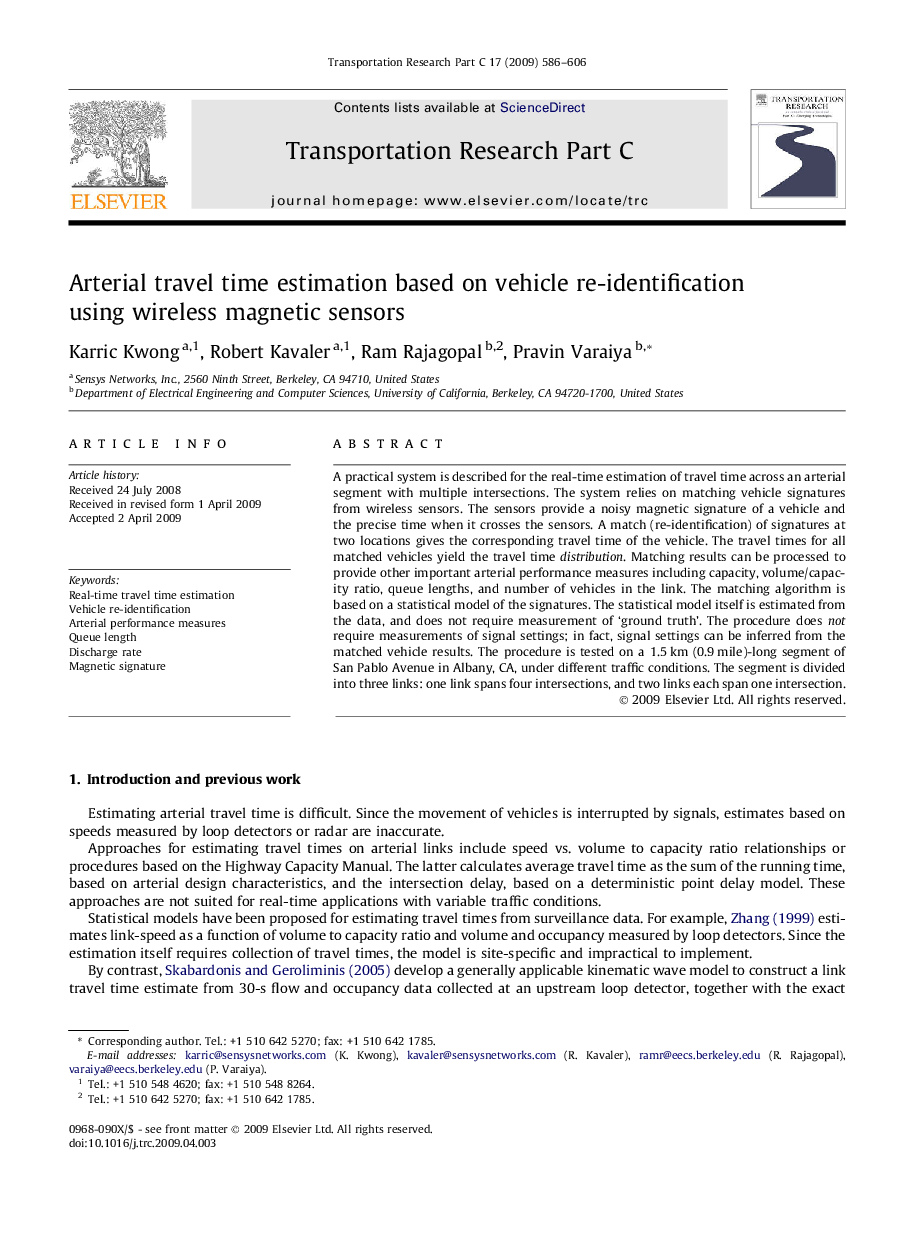| Article ID | Journal | Published Year | Pages | File Type |
|---|---|---|---|---|
| 526640 | Transportation Research Part C: Emerging Technologies | 2009 | 21 Pages |
A practical system is described for the real-time estimation of travel time across an arterial segment with multiple intersections. The system relies on matching vehicle signatures from wireless sensors. The sensors provide a noisy magnetic signature of a vehicle and the precise time when it crosses the sensors. A match (re-identification) of signatures at two locations gives the corresponding travel time of the vehicle. The travel times for all matched vehicles yield the travel time distribution. Matching results can be processed to provide other important arterial performance measures including capacity, volume/capacity ratio, queue lengths, and number of vehicles in the link. The matching algorithm is based on a statistical model of the signatures. The statistical model itself is estimated from the data, and does not require measurement of ‘ground truth’. The procedure does not require measurements of signal settings; in fact, signal settings can be inferred from the matched vehicle results. The procedure is tested on a 1.5 km (0.9 mile)-long segment of San Pablo Avenue in Albany, CA, under different traffic conditions. The segment is divided into three links: one link spans four intersections, and two links each span one intersection.
